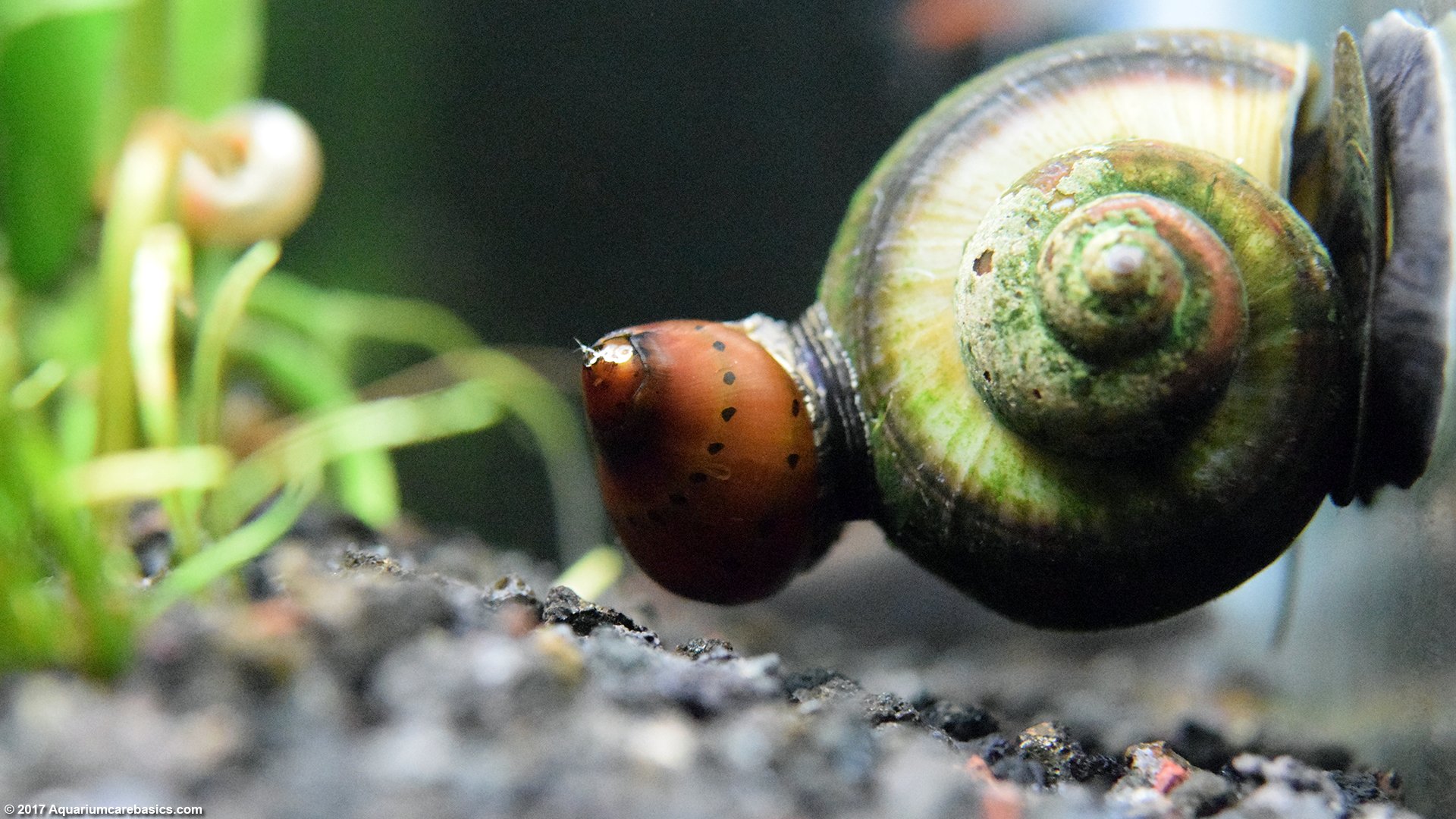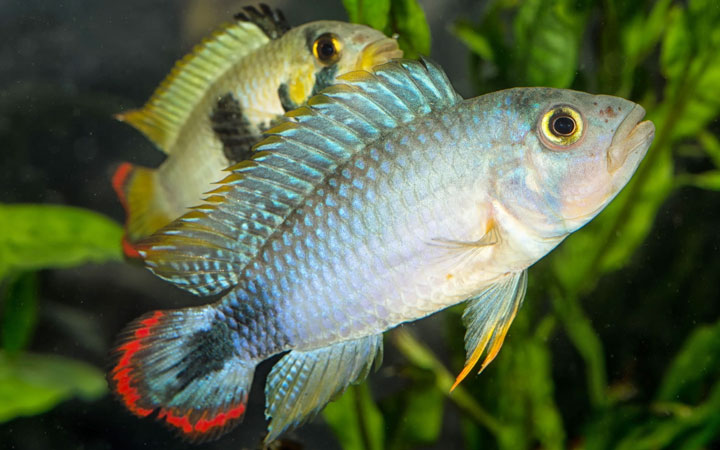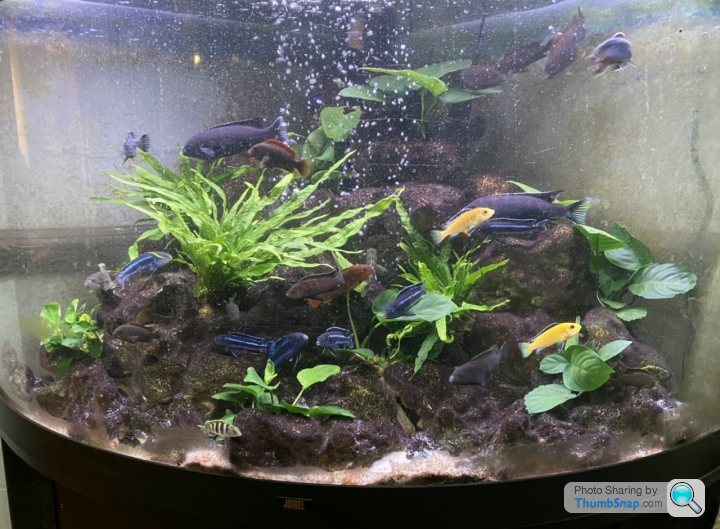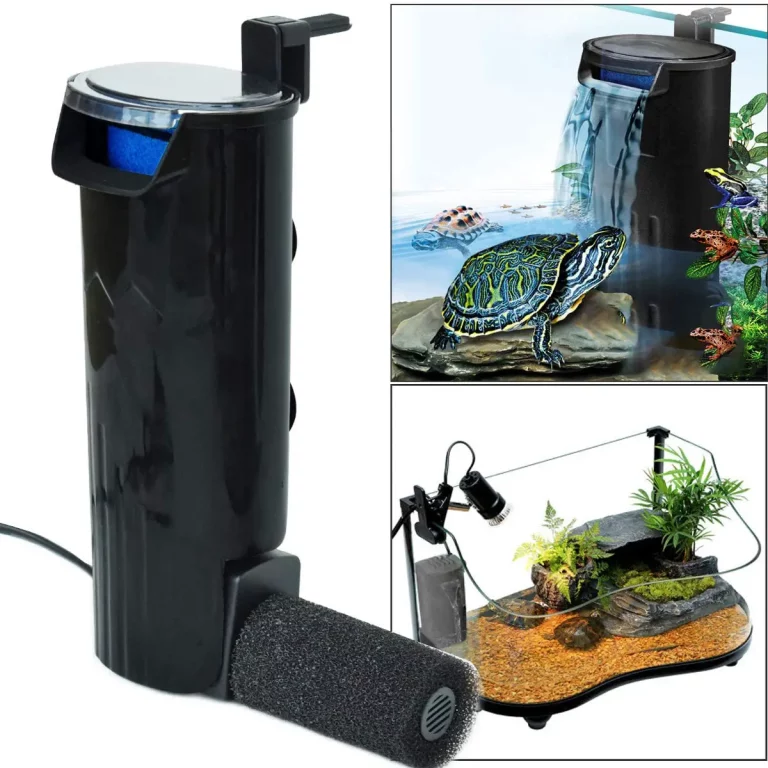Nerite Snail Vs Mystery Snail: The Ultimate Battle
Nerite snails are smaller and have a more intricate shell compared to mystery snails. Both nerite snails and mystery snails are popular freshwater aquarium snails.
While they both have similarities, there are some noteworthy differences. Starting with the size, nerite snails are generally smaller than mystery snails. In terms of physical appearance, nerite snails have a more intricate and patterned shell while mystery snails are more smooth and round.
Another key difference is in their reproduction, as mystery snails lay their eggs above the waterline while nerite snails lay their eggs underwater. Furthermore, nerite snails are much better suited for smaller aquariums due to their small size and lesser quantity of waste produced.

Credit: www.aquariumcarebasics.com
Identifying Nerite Snail And Mystery Snail
Nerite snail vs mystery snail: identifying nerite snail and mystery snail
If you are a beginner in the aquarium hobby, identifying the nerite snail and mystery snail can be a bit challenging. Although these two aquatic creatures share a few similarities, many differences set them apart and make them unique. Here’s a brief description of the physical appearance and the habitat preferences of each snail.
Physical Appearance Of Nerite Snail And Mystery Snail
Nerite Snail
The nerite snail has a distinct look with a dark, cone-shaped shell that can either be black, green, or brown. This shell has symmetrical, ridged lines across it, making it quite detailed and appealing to the eye. At the tip of the cone-shaped shell, the snail has a small spiral point, a unique feature present only in nerite snails.
On the underneath of the snail, they have a flat muscular foot allowing for easy movement.
Mystery Snail
The mystery snail also has a cone-shaped shell, but it differs from the nerite snail in that it is much larger and can grow up to 4 inches in diameter. They come in various colors ranging from ivory, gray, deep purple, and even black.
The mystery snail has a round aperture, not cone-shaped like the nerite snail. They have a bright yellow, or light brown, antennae-like organ that extends from the top of the shell. The foot of the mystery snail is usually pointed and strong, allowing them to move easily through the water.
Habitat Preference For Each Snail
Nerite Snail
The nerite snail prefers a slightly alkaline to the neutral tropical water with a ph range of 7. 5 – 8. 5. They can survive in both saltwater and freshwater, but they require hard water to sustain their shells. Nerite snails are best kept in temperatures between 65°f and 80°f.
They like to inhabit aquatic plants, rocks, driftwood and hard surfaces like aquarium glass.
Mystery Snail
The mystery snail prefers freshwater with a neutral to slightly acidic ph range of 7. 0 to 8. 0. They enjoy temperatures between 68°f and 82°f. Mystery snails are hardy and can adapt to different water conditions except for highly acidic or nitrate water.
They enjoy living in areas with vegetation and need easy access to the surface to breathe air.
Understanding the physical appearances and habitat preferences of both the nerite snail and mystery snail not only helps with identification, but also enables you to create an ideal living environment for your aquatic pets. Remember to provide the right parameters, food, and space for your snails to thrive in your aquarium.
Diet Differences Of Nerite Snail And Mystery Snail
Discussion On The Dietary Habits Of Nerite Snail And Mystery Snail
Nerite snails and mystery snails are some of the most popular freshwater snails in the aquarium industry, known for their unique beauty and ease of maintenance. However, there are some fundamental differences in their feeding habits and diet requirements. Here’s what you need to know:
Dietary Habits Of Nerite Snail
- Nerite snails are scavengers that feed on algae, biofilm, and other organic debris primarily.
- They are known as “herbivores” or “omnivores,” depending on their adaptation to different environments.
- In natural habitats, they consume a wide variety of algae species, including diatoms, filamentous, and greens.
- They have a high appetite for algae and tend to devour it within minutes.
- Feeding nerite snails once every two days is sufficient, as their diet comprises mainly algae.
Dietary Habits Of Mystery Snail
- Mystery snails, on the other hand, are considered “herbivores” since they mainly feed on aquatic plants.
- They can handle a lot of different types of aquatic vegetation, including algae, which can be a primary food source in captivity.
- They can also eat invertebrates, carcasses of dead fish, shrimp, and fish food leftovers.
- They prefer blanched vegetables, such as cucumbers, zucchini, and spinach, and high-quality sinking pellets.
- Feeding mystery snails once every two days is sufficient, given that they are grazers and have a slow metabolism.
Although both nerite and mystery snails share some similarities in their dietary habits, they have fundamental differences. Nerite snails are primarily algae eaters, while mystery snails are herbivores that can consume various aquatic plants. Knowing their feeding habits and diet requirements will help you ensure that they stay healthy and thrive in your aquarium.
Breeding And Reproduction
Nerite Snail Vs Mystery Snail: Breeding And Reproduction
Nerite and mystery snails are both freshwater aquarium snails that are popular for their unique appearance and ability to clean aquariums. While they share some similarities, they also have several differences, including breeding and reproduction. In this section of the blog post, we will delve deeper into the reproductive process of nerite snail and mystery snail and compare breeding both snails.
The Reproductive Process Of Nerite Snail And Mystery Snail
Nerite Snail:
- Nerite snails are dioecious, meaning they have separate sexes
- Males have a slightly shorter and narrower shell, while females have a rounder and wider shell
- The reproduction process starts when the male releases sperm in the water, and the female takes it in through its aperture.
- The female then lays numerous small, round, and yellowish eggs on surfaces like plants or hard substrates
- Eggs hatch in around 2-3 weeks, and the larvae become free-swimming once they reach a certain stage, making them vulnerable to predators and suction from filters.
Mystery Snail:
- Like nerite snails, mystery snails are also dioecious
- Males have a significantly longer and thinner shell opening than females
- A female mystery snail can store the male’s sperm for up to a month
- After fertilizing her eggs, the female lays the eggs above the waterline in a hardened, calcified clutch to protect the eggs from predators and diseases.
- The clutch contains around 50-200 eggs protecting in jelly
- Egg incubation takes roughly two weeks, and the baby snails can take care of themselves.
Comparison Between Breeding Both Snails
- Nerite snails are more difficult to breed than mystery snails.
- Both snails require a partner to breed, and both lay eggs above the waterline.
- Nerite snail eggs are much smaller, and the larvae pose a risk to the aquarium’s inhabitants since they can easily get sucked up in a filter.
- Mystery snail eggs are relatively more significant, and the female releases a gelatinous mass to protect them effectively.
- The mystery snail’s breeding process allows them to mate just once and lay several clutches over several weeks, resulting in hundreds of eggs.
- As for nerite snails, mating and egg-laying occur less frequently, resulting in fewer offspring.
Breeding and reproduction differ between nerite and mystery snails. It is crucial to understand these differences when breeding snails in your aquarium. While mystery snails are more commonly bred due to their ease of reproduction, both snails bring a unique beauty and cleaning ability to any aquarium.
Compatibility In Aquariums
Nerite Snail Vs Mystery Snail: Compatibility In Aquariums
Aquarium keepers enjoy adding snails to their tanks to help maintain a healthy environment. Two popular snails are the nerite snail and the mystery snail. Understanding the compatibility of these snails with other aquatic creatures and their benefits and drawbacks can help you make an informed decision about adding them to your aquarium.
Explain The Compatibility Of Nerite Snail And Mystery Snail With Other Aquatic Creatures
- Both nerite snails and mystery snails are peaceful creatures that get along well with others in the aquarium.
- Nerite snails are perfect for freshwater and saltwater tanks alike, whereas mystery snails prefer freshwater conditions.
- Both snail types are slow-moving and do not bother other creatures, making them perfect companions for peaceful fish species.
Benefits Of Adding Nerite Snail And Mystery Snail To Your Aquarium
- Both snail types are low-maintenance and do not require much attention after their placement in a tank.
- Nerite snails have unique patterns that can add a pop of color to your aquarium.
- Mystery snails come in various colors and sizes, allowing you to choose the perfect type for your tank’s aesthetics.
Drawbacks Of Adding Nerite Snail And Mystery Snail To Your Aquarium
- Both snail types may lay eggs in the aquarium, leading to overpopulation if not controlled.
- Nerite snails have a strong odor that can be unpleasant for some aquarium keepers.
- Mystery snails may have a maximum lifespan of up to two years.
Overall, both nerite snails and mystery snails are excellent choices for peaceful aquariums, and their compatibility with other aquatic creatures, low-maintenance requirements, and unique aesthetics make them appealing to many aquarium keepers.
The Lifespan And Health Of Nerite Snail And Mystery Snail
Factors That Can Affect The Health Of Nerite Snail And Mystery Snail:
Both nerite snail and mystery snail are known for their ability to keep a fish tank clean. They are fascinating creatures that are easy to take care of, and they have different lifespans. However, there are several factors that can affect their health, and it’s up to the owner to ensure their lives are as healthy and happy as possible.
Here are the key factors that can impact their health:
- Water temperature: Nerite and mystery snails need water temperatures in the range of 20-28℃. Temperature outside of this range can cause serious health issues for them.
- Water quality: Poor water conditions can lead to many health problems for these creatures, including shell erosion and a weakened immune system. Regular water changes can prevent this.
- Food: Overfeeding or underfeeding these snails can cause health problems for them. Also, the food must be ideal for their specific nutritional requirements.
- Water additives: Certain chemicals and medicines that are meant for use in aquariums can be toxic to these snails. Be sure to do research about the product before using it in your aquarium.
Measures That Can Be Taken To Ensure Their Well-Being:
Now that we know what factors can negatively impact the health of these snails, here are some preventive measures that can be taken to enhance their well-being:
- Adequate water changes: Regular water changes help maintain good water quality, and these snails need their water to be as clean as possible. Aim to change about 20% of the water each week.
- Balanced, nutritious diet: Provide a balanced, nutritious diet for your nerite or mystery snail. Being diligent in offering them the right type and amount of food can drastically improve their health.
- Observe and catch problems early: Conduct regular inspections of your snails, observing abnormalities that may need intervention. Keep an eye out for things like changing shell color, damage to the shell, or lethargy.
- Tank maintenance: Regular cleaning and maintenance of the aquarium, making sure to remove any uneaten food, dead plants, and debris.
Taking the above measures can go a long way in ensuring that your nerite or mystery snail is healthy and happy. Remember, with proper care, these snails can live for a considerable amount of time, adding liveliness and color to any aquarium.
Frequently Asked Questions For Nerite Snail Vs Mystery Snail
What Is The Difference Between Nerite Snails And Mystery Snails?
Nerite snails and mystery snails differ in appearance, behavior, and breeding. Nerite snails are smaller and prefer freshwater, while mystery snails are larger and can live in both freshwater and brackish water. Nerite snails are more active and prefer to move around the tank, while mystery snails are comparatively less active and spend a good amount of time attached to a surface.
Can Nerite Snails And Mystery Snails Live Together In The Same Tank?
Yes, nerite snails and mystery snails can live together in the same tank as they are peaceful creatures and do not show aggression towards each other. However, it is important to ensure that the water parameters are suitable for both species.
What Should You Feed Nerite Snails And Mystery Snails?
Nerite snails and mystery snails are both herbivores and need a balanced diet of algae and other plant-based foods. You can provide them with algae wafers, blanched vegetables like lettuce, zucchini, or spinach, and spirulina powder.
How To Tell If Nerite Snails And Mystery Snails Are Male Or Female?
Determining the gender of nerite snails and mystery snails can be challenging. Unlike some other snail species, they do not exhibit clear physical differences between the male and female specimens. The only way to determine their gender is by observing their behavior during breeding.
Females always lay eggs, while males will be seen chasing and mounting females.
Conclusion
With their unique color, pattern, and size, both nerite and mystery snails make great additions to any aquarium. As we’ve learned in this article, they differ in their eating habits, breeding, and compatibility with other species. Selecting the right type of snail for your aquarium requires careful consideration of these factors, as well as the specific needs and goals of your tank.
Factors like the size of the tank, water temperature, and ph level can all impact the health and well-being of your snails. Ultimately, choosing either nerite or mystery snails will come down to personal preferences and goals. With a little research and preparation, however, you can enjoy the beauty and benefits of either snail species for years to come.






